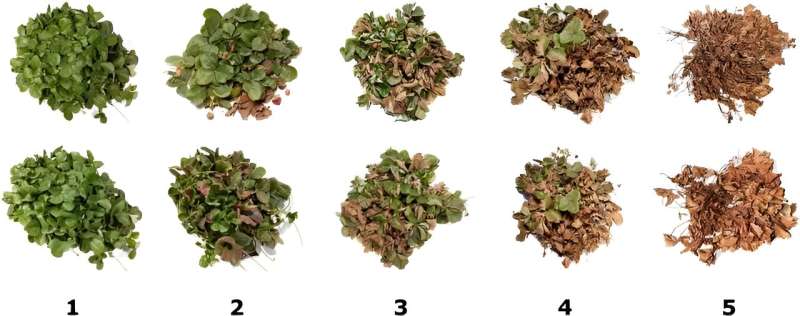This article has been reviewed according to Science X's editorial process and policies. Editors have highlighted the following attributes while ensuring the content's credibility:
fact-checked
peer-reviewed publication
proofread
Strawberry fields fortified: New genetic insights combat devastating soilborne disease

Globally, strawberries are gravely affected by Macrophomina phaseolina, a soilborne fungal pathogen that drastically reduces yields. Following the phase-out of conventional soil fumigants like methyl bromide, there is an urgent need to enhance genetic resistance to this pathogen.
The resistance mechanism is intricate at the genetic level, presenting considerable obstacles to traditional breeding methods. Consequently, there is a pressing need for in-depth research to devise sophisticated genetic strategies to effectively counter this threat.
The study, conducted by the Department of Plant Sciences at UC Davis and published in Horticulture Research on January 3, 2024, illustrates how phenotypic selection under stress conditions can swiftly bolster disease resistance in strawberries.
Researchers leveraged genome-wide association studies (GWAS) and state-of-the-art genomic tools to unravel the resistance mechanism, identifying several pivotal resistance loci.
This research offers an exhaustive analysis of the genetic resistance to Macrophomina in strawberries, revealing it as a complex polygenic trait influenced by numerous loci. Utilizing advanced genomic technologies, including GWAS, researchers pinpointed these essential resistance loci.
This facilitated the effective stacking of favorable alleles, significantly boosting resistance levels in the breeding population from 1% to 74% within two selection cycles. By implementing genomic selection techniques and simulating environmental stress conditions during the breeding process, researchers achieved rapid genetic improvements.
The application of high-throughput genotyping and strategic allele stacking enhanced the identification and utilization of key genetic elements, refining the breeding strategy for the rapid development of resistant strawberry varieties.
Dr. Steven J. Knapp, the study's lead author, stated, "This research not only propels our understanding of genetic resistance forward but also establishes a model for predictive breeding approaches that could be employed for other crops facing similar challenges."
The implications of this study reach beyond strawberries, providing a template for addressing diseases in other crops via genomic selection. This method could transform how breeders manage disease resistance, diminishing reliance on chemical treatments and boosting crop sustainability.
Additionally, the cultivation of disease-resistant strawberry varieties could greatly enhance both yield and quality, offering substantial benefits to growers and consumers alike.
More information: Steven J Knapp et al, Transgressive segregation, hopeful monsters, and phenotypic selection drove rapid genetic gains and breakthroughs in predictive breeding for quantitative resistance to Macrophomina in strawberry, Horticulture Research (2024). DOI: 10.1093/hr/uhad289
Journal information: Horticulture Research
Provided by TranSpread





















